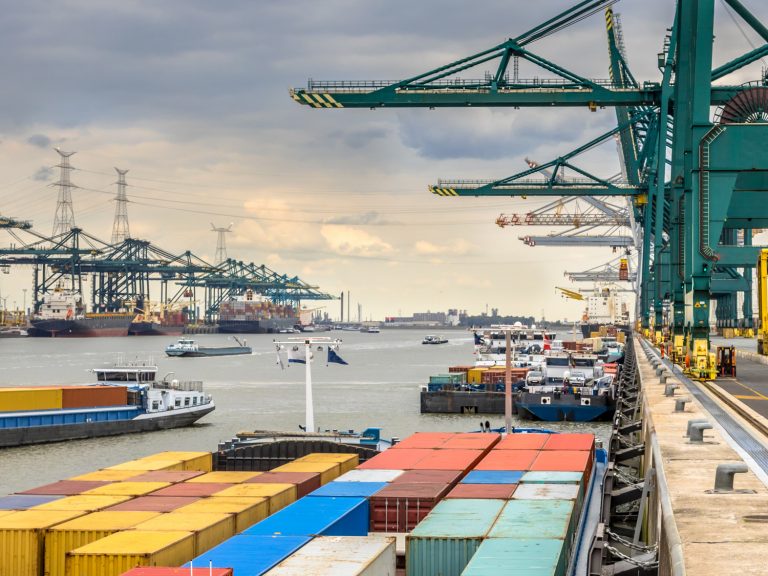
Date:
Belgium’s National Strike Could Trigger Congestion Across Europe’s Port Network
A three-day national stoppage across Belgium’s rail, transport and public sectors this week is set to disrupt freight flows through Antwerp and the wider Benelux logistics corridor, adding fresh strain to a European port network already battling congestion and capacity limitations.
With rail operations suspended from 23–26 November and port labour expected to work at reduced levels, cargo planners face yet another round of delays, vessel bunching and inland transport bottlenecks at one of Europe’s most critical gateways.
Antwerp, Rotterdam and Hamburg — Europe’s three largest container hubs — are already assessed as operating under “heavily disrupted” conditions, with vessel arrivals delayed, yard space critically tight and inland networks struggling to absorb backlogs. The Belgian strike is expected to amplify these pressures, with knock-on effects rippling across vessel schedules and North Europe’s wider supply chain.
Antwerp-Bruges has flagged its critically low land-side space throughout the year, with terminals frequently operating at near-full capacity. October’s sea-pilot go-slow created significant vessel queues and with Belgian rail services halted, containers normally routed inland will accumulate in terminal yards, lengthening dwell times and restricting handling capacity.
This congestion will inevitably spill over into Rotterdam and Hamburg, which are tightly interconnected with Antwerp via short-sea, barge and rail services. These gateways are already facing reduced productivity and fluctuating delays due to labour actions, weather disruptions and shifting seasonal peaks.
When Local Congestion Becomes Global Disruption
One of the most challenging characteristics of European congestion is the way local delays quickly cascade into global disruption. When a vessel loses its berthing window at one major gateway, it often misses subsequent windows at other ports, multiplying delays across the entire rotation. This disrupts equipment availability, pushes back onward schedules, and creates irregular cargo arrival patterns.
The impact extends beyond transit times and quickly feeds into freight rates through multiple mechanisms. Carriers frequently accelerate between ports to recover lost time, consuming significantly more bunker fuel. These additional fuel costs inevitably find their way into freight-rate structures, either through bunker adjustment factors or direct increases.
Risk premiums also rise during periods of uncertainty. When ports become unpredictable, carriers must price in the potential for extended port stays, schedule penalties, congestion surcharges, and the operational cost of vessel redeployment. All of these feed into higher all-in rates for shippers.
There is also a capacity effect. A vessel that spends extra days waiting at Antwerp, Rotterdam or Hamburg is not available for revenue-generating sailings. When effective supply shrinks while underlying demand holds steady, upward pressure on rates becomes unavoidable. This is why prolonged European congestion often leads to rate volatility far beyond the region itself, even influencing Asia outbound pricing and global container availability.
What shippers could expect
The Belgian strike is likely to cause:
- Increased vessel waiting times at Antwerp and surrounding ports
- Higher yard density and longer dwell times
- Disruption to rail-served inland hubs across Belgium, France, Germany and the Netherlands
- Delays to barge and short-sea connections
- Knock-on congestion at Rotterdam and Hamburg
- Extended transit times and schedule unreliability for Asia–Europe trades
With multiple labour actions also planned in Portugal and Italy, further regional disruption is likely through December.
